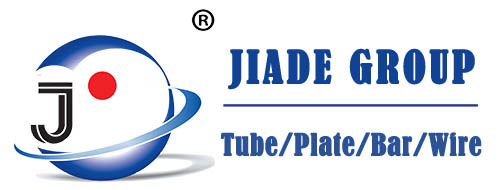444 Stainless Steel (UNS S44400) – Composition, Properties and Uses

UNS S44400 is a ferritic stainless steel alloy. It contains low levels of carbon and has good corrosion resistance, making it a popular choice for applications like kitchenware, appliances, and automotive parts. Let’s explore the composition, mechanical, and physical properties of 444 stainless steel to understand better how it can be used in various industries.
SS444 Chemical Composition
444 ss is composed of iron, chromium, manganese, silicon, and nitrogen. The most common alloying elements are chromium and nickel. Chromium provides 444 stainless steel with excellent corrosion resistance properties and the ability to be heat treated for enhanced strength. Manganese increases the strength of the alloy, while silicon helps reduce scaling during high-temperature service. Nitrogen adds extra strength without affecting the material’s ductility or formability.
| Element | Content (%) |
|---|---|
| Iron, Fe | 77.475 |
| Chromium, Cr | 18.5 |
| Molybdenum, Mo | 2 |
| Nickel, Ni | 1 |
| Manganese, Mn | 1 |
| Silicon, Si | 1 |
| Carbon, C | 0.025 |
444 Stainless Steel Mechanical Properties
UNS S44400 has a yield strength of 165 MPa (24 ksi) and an ultimate tensile strength of 585 MPa (85 ksi). It has a hardness rating on the Rockwell C scale ranging from 22-28 HRC depending on the application. This makes it ideal for applications where hardness is essential such as cutlery and kitchen appliances.
| Properties | Metric | Imperial |
|---|---|---|
| Tensile strength | 415 MPa | 60200 psi |
| Yield strength (@strain 0.200%) | 275 MPa | 39900 psi |
| Elastic modulus | 200 GPa | 29000 ksi |
| Shear modulus | 80-83 GPa | 11600-12000 ksi |
| Poisson’s ratio | 0.27-0.30 | 0.27-0.30 |
| Elongation at break | 20% | 20% |
| Hardness, Rockwell B | 95 | 95 |
444 Stainless Steel Physical Properties
444 ss has a density of 7800 kg/m³ (488 lb/ft³). It has a melting point range between 1350-1400°C (2460-2550°F). Its thermal conductivity rating is 20 W/mK (14 Btu/hr•ft•°F) at room temperature, which makes it useful for applications that require high thermal efficiencies, such as exhaust systems and heat exchangers. Its coefficient of thermal expansion is 11 x 10⁻⁶ K⁻¹ (20 x 10⁻⁶ in./in./°F).
| Properties | Metric | Imperial |
|---|---|---|
| Density | 7.80 g/cm3 | 0.282 lb/in³ |
444 Stainless Steel Thermal Properties
| Properties | Metric | Imperial |
|---|---|---|
| Thermal expansion co-efficient | 10 µm/m°C | 5.56 µin/in°F |
| Thermal conductivity | 26.8 W/mK | 186 BTU in/hr.ft².°F |
444 Stainless Steel Equivalents
- ASTM A176
- SAE 51444
444 Stainless Steel Uses
UNS S44400 has many unique uses due to its low cost and highly durable nature. This incredible steel can be found in various fields, such as heavy-duty infrastructure and architecture. Many buildings, roads and bridges are now being created with 444 stainless steel to ensure long-term strength and damage resistance. It is also used for projects associated with high-salt environments, like seaports and coastal manufacturing plants. Jiangsu Dongtai Stainless Steel Tourism and Culture Creative Park in China is constructed out of this material for its stability and aesthetic beauty, showing that creativity does not always have to come at a premium.
Conclusion
444 stainless steel is an austenitic, ferritic stainless steel that offers excellent corrosion resistance combined with good formability and weldability characteristics. It has good mechanical properties and physical properties, making it suitable for use in many different industries, including automotive, construction, plumbing, aerospace and more. Its low carbon content also makes it an excellent choice for food preparation as it does not leach harmful chemicals into foods when heated at high temperatures like some other alloys may do. If you are looking for an affordable yet durable material that meets all your needs, then consider using 444 stainless steel!
